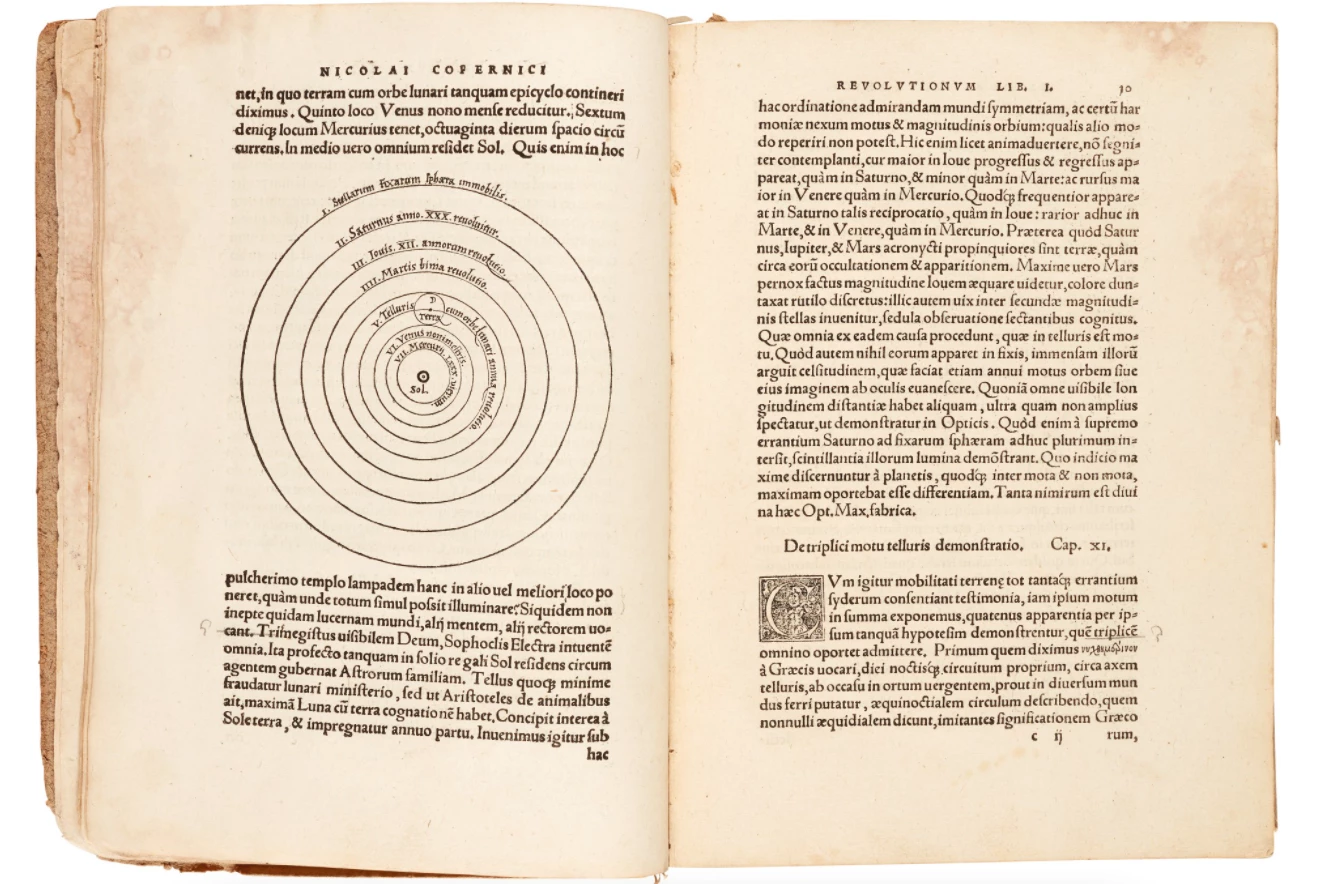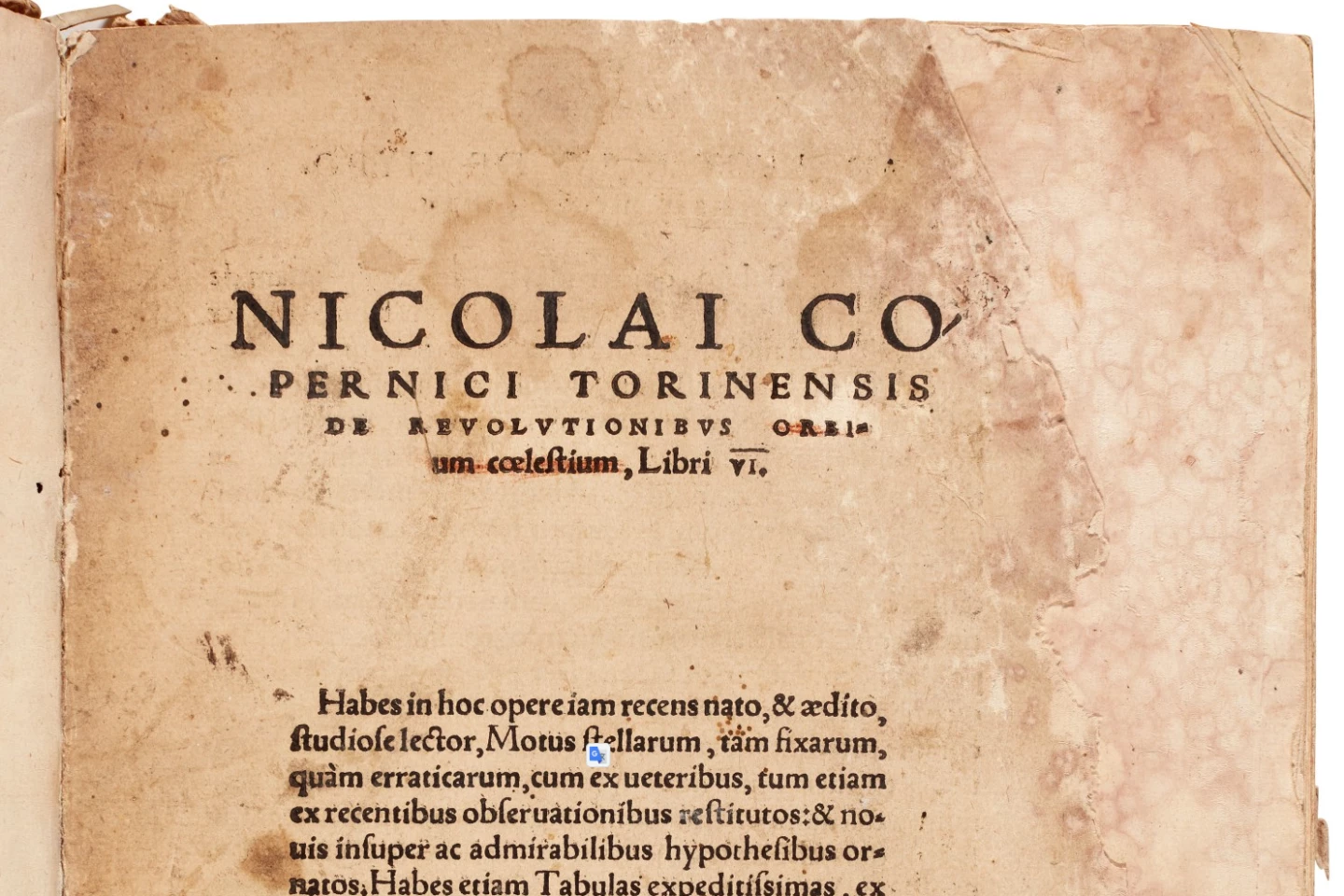This 1543 publication of Copernicus' heliocentric model, which correctly identified the sun as the centre of our solar system, was a major event in the history of science, triggering the Copernican Revolution and making a pioneering contribution to the Scientific Revolution. As an aside, a National Science Foundation survey found roughly one quarter of Americans still believe the sun revolves around the earth.
Just 276 copies of the first edition were known prior to this auction, though the condition of the book was such that it fetched just a fraction of the prices previously achieved by more complete first edition copies in better condition.

The record price of $2,210,500 paid at auction for a first edition copy of the book was achieved by Christie’s in New York in 2008 during the sale of the The Richard Green Library. Several other first edition copies have sold for more than US$1.0 million including $1,297,953 (£825,250 | Sotheby’s | 2011), $1,219,579 (£666,400 | Sotheby’s | 2004), and $1,071,461 (£662,500 | Christies | 2013).
Interestingly, the number of extant copies of First Folio Shakespeare is quite similar at 228 copies, and they fetch considerably more at auction with copies of this work having sold for $9,978,000, $6,166,000 and $5,173,740 (£2,808,000).
The remarkable History of this Book

Initially, Copernicus made known his ideas on heliocentrism in manuscript form only, which were circulated among a few close colleagues.
His radical work came to the attention of a young mathematician and astronomer, Georg Joachim Rheticus, who became the chief advocate of Copernicus's new theory.
Rheticus persuaded Copernicus to allow him to announce a summary of heliocentrism in print in 1540 (De libris revolutionum eruditissimi viri), and eventually to publish Copernicus's work in full, which became De revolutionibus. A copy of De libris revolutionum eruditissimi viri sold for $2,402,292 (£1,818,500) in 2016, becoming one of the most valuable scientific documents sold that year.
Already familiar with the scientific publishing of Johann Petreius at Nuremberg, Rheticus delivered Copernicus's manuscript (which survives at Jagiellonian Library at Kraków University) to Petreius in 1542 and acted as editor and proof-reader. When Rheticus left Nuremberg to take up a professorship at Leipzig, Andreas Osiander took over responsibility for proof-reading.
Apparently fearful of a violent reaction against the work by the Church, Osiander wrote a prefatory address to the reader in which he attempted to placate in advance critics of Copernicus's theory. In it he stated that the work presents merely hypotheses which "need not be true or even probable; if they provide a calculus consistent with the observations, that alone is sufficient."

Since a finished copy of the De revolutionibus only reached Copernicus on the eve of his death, his reaction to Osiander's address is unknown, but Rheticus and other Copernican disciples found it reprehensible. Several copies survive in which the address (and the last words of the title "orbium coelestium", probably also a late addition by Osiander) is crossed through by Rheticus. This copy is one such copy. Kepler denounced the address as the work of Osiander in 1609 in the introduction to his Astronomia nova.
Source: Sotheby's






